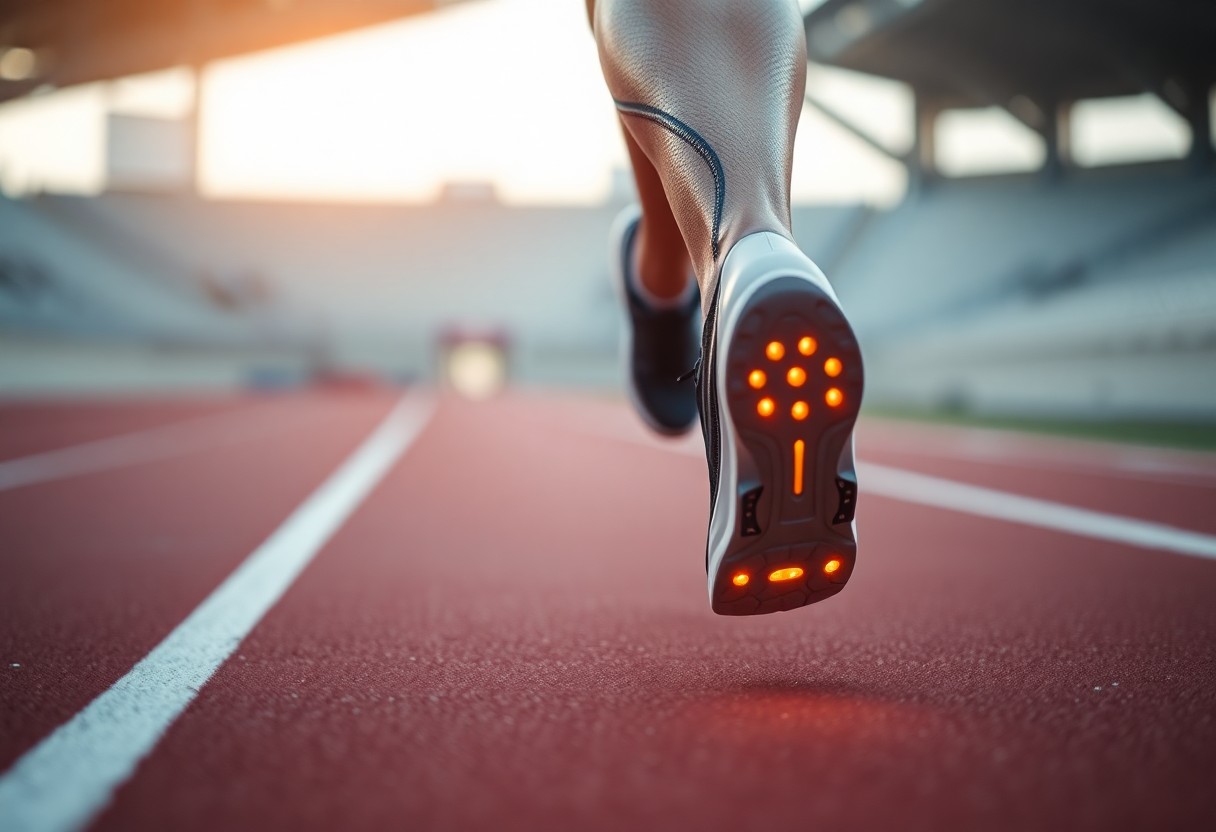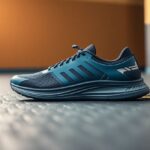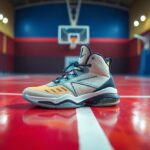
Discover the innovative breakthroughs in running footwear technology that have dramatically altered the performance landscape for endurance athletes. These advancements are not just about style; they represent a significant shift in how athletes can maximize their capabilities.
The evolution of performance optimization in endurance running is largely attributed to advanced footwear technology, which presents unprecedented avenues for enhancing your athletic potential. You will learn how state-of-the-art shoe designs can significantly lower your metabolic expenditure while enhancing running economy. By incorporating carbon fiber plates and advanced midsole materials, these shoes exhibit exceptional energy return mechanisms, which can decrease your oxygen consumption by as much as 4%. Whether you are a professional athlete or a passionate amateur, grasping these biomechanical advancements enables you to make informed choices regarding your running gear, helping you enhance your race times.
 Continue reading to explore the intricate mechanics of running footwear that promise to elevate your performance:
Continue reading to explore the intricate mechanics of running footwear that promise to elevate your performance:
Harnessing Energy Return Mechanisms for Enhanced Running Performance
The realm of advanced running shoes utilizes intricate biomechanical principles essential for revolutionizing energy transfer during running. Innovative design elements work in harmony to minimize metabolic expenditure, establishing a sophisticated system that enhances running efficiency through meticulous material engineering and geometric configurations. By concentrating on the mechanics of energy return, these shoes provide runners with a significant edge in both performance and stamina, enabling longer runs with less fatigue and improving overall athletic output.
Unveiling the Dynamics of Carbon Fiber Plate Curvature
Carbon fiber plates utilize exact geometric engineering to redirect kinetic energy throughout the running motion. With optimal curvature angles ranging from 12° to 15°, these plates facilitate maximum energy storage and return, with finite element modeling indicating energy return efficiencies of up to 93% in prototype designs. The spring-like action of these engineered plates minimizes muscular work during the toe-off phase, allowing runners to conserve energy over extended distances, ultimately leading to improved endurance and performance outcomes.
Evaluating TPU vs. EVA: A Midsole Material Showdown
Material selection plays a critical role in determining shoe performance, with thermoplastic polyurethane (TPU) emerging as a leading midsole technology. Comparative analysis highlights TPU’s superior benefits in energy return and impact absorption, offering runners enhanced biomechanical efficiency across a variety of running conditions. The decision between TPU and EVA foam is crucial for athletes aiming to optimize their performance while minimizing the risk of injuries during both training and competition.
| Energy Return | 18% higher in TPU |
| Oxygen Consumption Reduction | 2.4% lower with TPU |
A deeper dive into midsole materials reveals intricate performance characteristics. TPU showcases superior resilience when compared to traditional EVA foam, maintaining consistent mechanical properties even after thousands of compression cycles. Runners benefit from more reliable energy return, reduced fatigue, and enhanced long-distance performance thanks to advancements in material science, which can have a profound effect on their overall training results and competition achievements.
| Impact Absorption | TPU absorbs 37% more force |
| Rebound Elasticity | 89% maintained across 50,000 cycles |
 As we continue, let’s delve into the relationship between advanced footwear technology and metabolic efficiency:
As we continue, let’s delve into the relationship between advanced footwear technology and metabolic efficiency:
Evaluating Metabolic Efficiency: Identifying Who Gains the Most from Advanced Footwear
The impact of advanced footwear technology is not uniform across all runners. Metabolic efficiency gains differ significantly among various demographic groups, influenced by factors such as gender, age, and individual biomechanics, which all play crucial roles in enhancing performance. Research has unveiled intricate patterns of metabolic response, indicating that the benefits of super shoes extend beyond mere performance metrics to encompass complex physiological adaptations unique to each runner's biomechanical profile.
Analyzing Gender-Specific Performance Improvements
Female runners experience a 3.2% improvement in metabolic power, in contrast to a 4.2% increase for male runners, suggesting complex neuromuscular adaptations. Data on pelvic kinematics reveals a 14% greater reduction in hip adduction angle for females utilizing advanced footwear, which might clarify the subtle differences in metabolic benefits observed between genders. Understanding these distinctions enables tailored training and footwear strategies that maximize performance benefits for each gender, ensuring that all athletes can achieve their personal bests.
Exploring Age-Related Advantages in Endurance Performance
Masters athletes over the age of 40 exhibit a 2.8% greater reduction in oxygen costs when employing super shoes, likely compensating for decreased tendon elasticity. Tibial loading analysis shows a 12% cumulative stress reduction per kilometer in older runners, indicating potential benefits in both injury prevention and performance sustainability. These findings underscore the critical role of advanced footwear technology in prolonging the competitive careers of older athletes, ensuring they can continue to participate at high levels.
The advantages of advanced footwear technology for older runners extend beyond simple performance metrics. Biomechanical studies demonstrate that older athletes exhibit more marked adaptations due to compensatory mechanisms. Decreased tendon stiffness and altered muscle recruitment patterns interact with shoe technology, creating a unique profile of performance enhancement. Specifically, the energy return mechanism provided by carbon plates seems to counteract age-related biomechanical inefficiencies, potentially allowing aging athletes to extend their competitive running careers by alleviating the physiological constraints typically linked with aging.
Continue reading for insights into the implications of advanced footwear technology on injury risks:
Investigating the Influence of Running Footwear on Injury Risk
The introduction of advanced footwear technology brings about intricate biomechanical interactions that necessitate a detailed analysis of potential injury risks. Runners should carefully weigh the trade-offs between performance enhancement and physiological adaptation. Longitudinal studies reveal subtle yet impactful changes in muscular recruitment patterns, joint loading, and proprioceptive feedback when transitioning to high-performance running shoes, highlighting the importance of a balanced training and recovery approach.
Injury Examination: The Implications of Enhanced Performance
Biomechanical research indicates that there is a 9% increase in Achilles tendon strain rates among super shoe users during high-intensity training. Plantar pressure mapping indicates a 22% increase in forefoot loading when compared to traditional trainers, particularly evident during challenging terrains such as downhill running. These insights suggest that while metabolic efficiency may improve, runners must implement targeted strength and adaptation protocols to mitigate potential injury risks and maintain long-term athletic health.
Tailoring Training Protocols for Optimal Gait Adjustments
Your biomechanical response to advanced footwear necessitates deliberate modifications in your training strategies. Gait retraining is essential to optimize the unique energy return mechanisms inherent in carbon-plated shoes. Athletes must concentrate on developing neuromuscular patterns that synchronize with the shoe's biomechanical design, reducing injury risk while maximizing performance benefits.
Comprehensive gait adaptation strategies require a multifaceted approach to effectively integrate advanced footwear technology. Biomechanical analyses suggest that athletes need about 6-8 weeks of progressive training to fully adjust to the unique mechanical properties of super shoes. This adaptation period involves targeted eccentric strengthening exercises, modified interval training methods, and meticulous tracking of lower limb biomechanics. For professional athletes and serious runners, periodic 3D gait analysis can be invaluable in monitoring subtle shifts in movement patterns, ensuring optimal integration of advanced footwear technology with individual biomechanical features.
 Let’s explore the future of footwear technology and its implications for runners:
Let’s explore the future of footwear technology and its implications for runners:
Anticipating Future Innovations in Running Footwear Technology
Emerging technologies are set to revolutionize running shoe design, pushing the boundaries of biomechanical efficiency and performance optimization. Cutting-edge research is focusing on personalized solutions that adapt to individual biomechanics, utilizing advanced materials, computational modeling, and integrated sensor technologies to create a new generation of intelligent footwear tailored for elite athletes.
Transforming Footwear Design with 3D Printed Midsoles
Optimization algorithms for lattice structures now allow for precise variations in stiffness that align with individual foot pressure maps. Prototype testing has shown a 5.1% increase in metabolic savings compared to standard models, with computational design enabling unparalleled customization of midsole geometries to maximize energy return while minimizing biomechanical stress. This innovative approach ensures that each runner can achieve their highest performance tailored to their specific physical attributes.
Integrating Smart Technology for Enhanced Performance Monitoring
Emerging sensor technologies are transforming running shoes into advanced performance tracking instruments. Real-time ground reaction force feedback systems can reduce oxygen costs by 1.9% through minute adjustments in cadence, providing athletes with immediate biomechanical insights during both training and competitive events. These advancements are essential for athletes who seek to fine-tune their techniques and performance metrics effectively.
The integration of advanced sensors marks a significant leap in performance monitoring technology. Multi-axis accelerometers, pressure-sensitive matrices, and embedded microprocessors now gather intricate biomechanical data with remarkable precision. These smart systems analyze gait mechanics, impact forces, and energy expenditure in real-time, granting runners detailed insights into their movement patterns. Machine learning algorithms are now capable of predicting potential injury risks, optimizing training loads, and suggesting personalized technique adjustments based on comprehensive analyses of movement, fundamentally transforming running shoes from passive tools into active components of performance enhancement.
Finally, deepen your understanding of the transformative advancements in advanced footwear technology for endurance running:
Embracing the Future of Advanced Footwear Technology in Running
In summary, you have engaged with the transformative advancements in advanced footwear technology within endurance running. Your knowledge now encompasses how innovative design features like carbon plates and high-performance midsole materials can significantly reduce metabolic costs and enhance running efficiency. By leveraging scientific insights, you can recognize that these shoes offer more than incremental gains—they signify a substantial shift in athletic performance paradigms. Your investment in such technology could translate into improved running economy, lower energy expenditure, and optimized biomechanical responses across various athletic demographics.
The Article Biomechanical Efficiency of Advanced Footwear Technology: Metabolic Cost Reduction and Performance Enhancement in Endurance Running appeared first on My Shoes Finder.
The Article Biomechanical Efficiency in Advanced Footwear for Runners Was Found On https://limitsofstrategy.com





